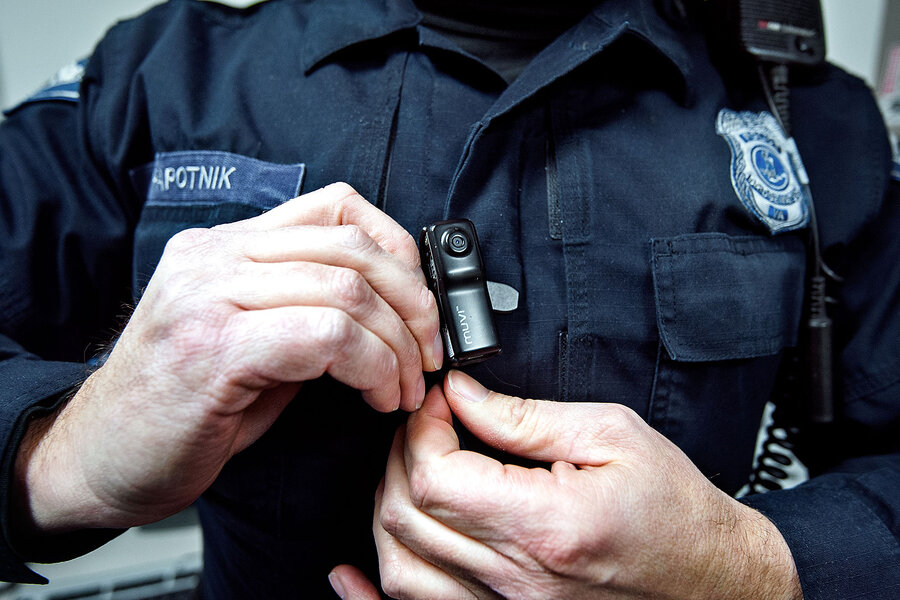An Ohio police officer who shot, but didn't kill
Loading...
A tense three and a half minutes on an Ohio interstate highway left a police officer reeling and his armed assailant very much alive.
Glendale Police Officer Joshua Hilling successfully de-escalated an attempted "suicide by cop" incident on March 29 that, caught on body camera, has prompted police to say he illustrated excellence in one of police work's most trying situations, Kevin Grasha reported for Cincinnati.com.
As police forces across the United States face increased public scrutiny every time they wound or kill a suspect, law enforcement agencies say the incident in Ohio, which was caught on camera, helps to show the complex decisionmaking process involved in detaining violent suspects. The incident represents another touchstone in the debate over the cost and practice of using body cameras, underscoring arguments that real-time footage can improve public perceptions of police, at a time when trust in law enforcement persists at a low point.
The term "suicide by cop," when someone deliberately escalates a police situation in the hope of ending their own life, has been used since the 1990s. Although the government has kept no official numbers, a study of police shootings between 1998 and 2006 in the Journal of Forensic Science suggested that 36 percent were the result of a "suicide by cop" situation.
Jim Bueermann, a former police chief and president of the nonpartisan research organization, the Police Foundation, called the Ohio officer's actions "heroic," and said situations where officers consider using a gun are one of police work's most tense.
"I can’t even begin to describe how much on edge you are ... and you have to make that decision," Mr. Bueermann says. "The last thing [police] want to do is pull the trigger because they know that person is in distress."
In this case, Officer Hilling found Javier Aleman walking down a busy Ohio highway and offered him a ride. As he completed a pat-down, the standard protocol before letting someone enter a police car, the man pulled out a knife.
"Kill me! Kill me! Kill me now!” Mr. Aleman said, according to the video, as he charged the officer. Hilling fired one shot into Aleman's stomach as he ran at the officer, but Aleman stood up and said, "I’m going to kill you."
Hilling moved away from Aleman but refrained from shooting until back-up arrived, and another officer used a Taser on Aleman.
Police are trained for these situations as part of dealing with mental health issues, Bueermann says. They try to "create some space," just as Hilling did, and talk their way through it unless the person charges. Hilling kept the man talking, responding to 40 requests to "kill me" with repeated instructions to drop the knife.
Investigators found that Aleman had already been wanted in Maryland on an attempted murder charge, but a grand jury will decide later this month whether to indict him on an attempted murder in Ohio, for which he could face 11 years in prison, the Associated Press reported.
In another example of the "suicide by cop" phenomenon, a New Jersey teenager brought a fake gun to school in the hope of being shot by police in December. Former police officer Ken Bouche told Lisa Suhay for The Christian Science Monitor that past police training makes suicide by cop a realistic expectation to someone in distress.
"This is not a new phenomenon – suicide by cop," Mr. Bouche, chief operating officer of Hillard Heintze, a law enforcement advisory and consulting firm for police departments, told The Christian Science Monitor. "People know if you pull a gun on police officers the likelihood of you getting shot is high. The news right now about police interactions and shootings is so graphic that I don't know why we wouldn't expect our kids to believe that."
He said the new training goal for many departments is to change the perception through action. Anyone who pulled a gun on police would then expect officers to try and save all lives involved.
"Five years from now it is going to be better than it’s ever been due to changes in training models that are in place now,” Mr. Bouche told said.
Bueermann says police succeed in deescalating these situations every day, but the body camera made this incident more prominent.
"I think we’re going to see more and more of that as we get more body cameras," he says. "It happens every day, all over the country."






